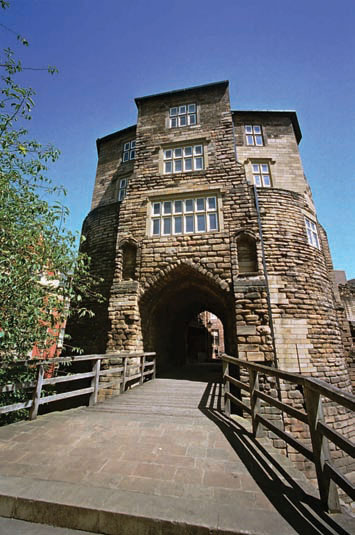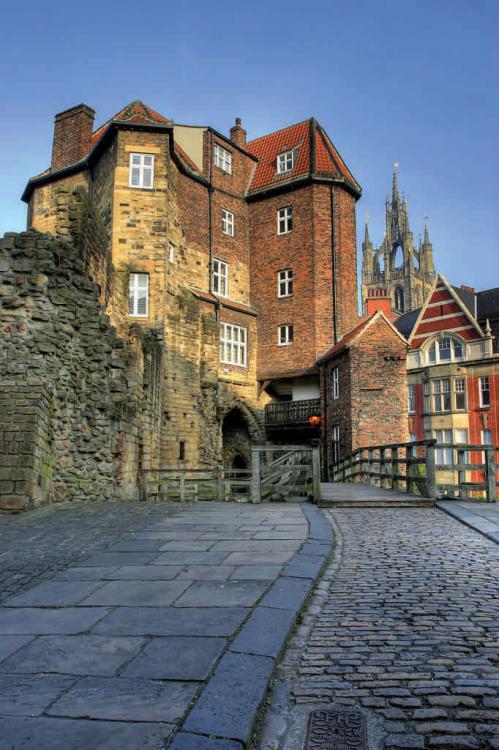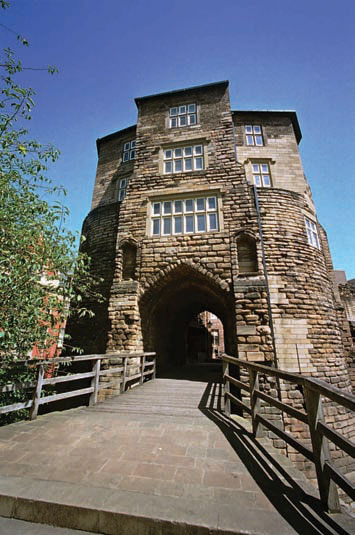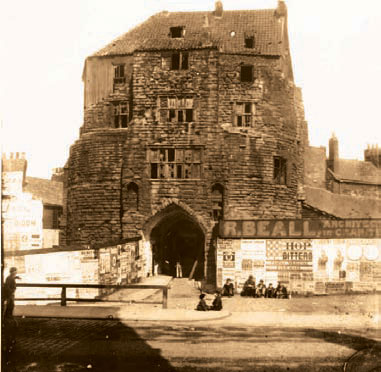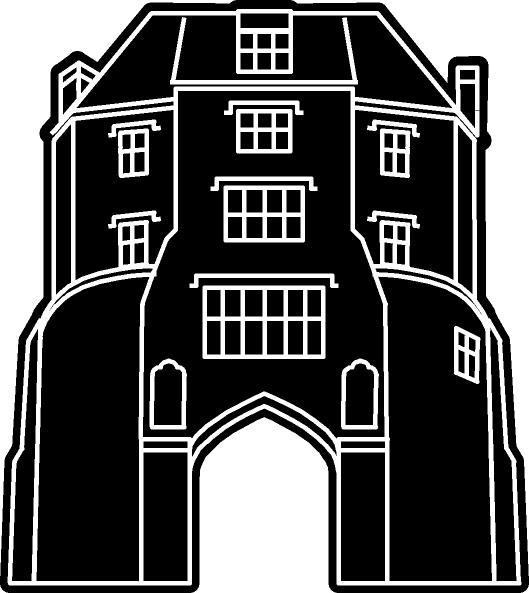Consisting of an arched passage flanked by two towers it was approached by a turning bridge at both the front and rear. The bridges could be closed quickly using counterweights and the front of the Black Gate could be sealed by a portcullis.
The height of the medieval building is unknown; the present top two floors, roof and additional arch over the passage were added in the early 17th century when the gatehouse was turned into a house by Alexander Stephenson who leased the Black Gate from King James I. Other houses were gradually built within the area enclosed by the Castle walls and around the Black Gate.
The name by which the Black Gate is now known refers to Patrick Black, a London merchant who occupied the building later in the 17th century.
There were many families and a number of shops in the Castle and during the 19th century there was even a public house in the Black Gate.
By the early 19th century the Black Gate had
become a slum tenement at one time housing 60 people. Only during the 1840s with the
construction of the railway did the clearance of the area begin.
